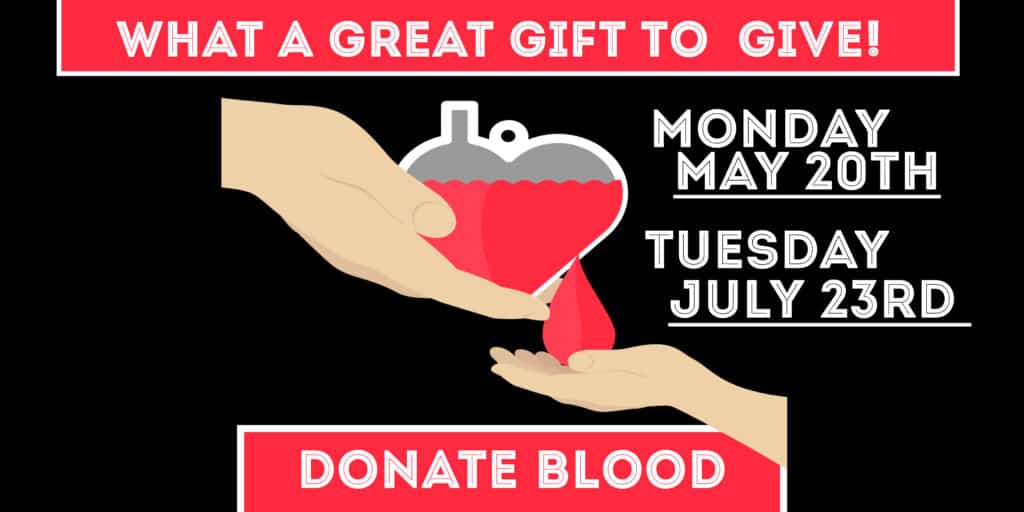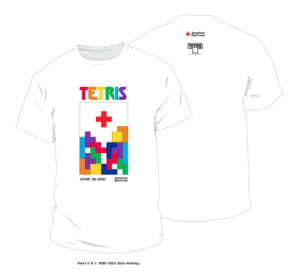
Blood Donation Details

Win A Tritoon Rental
Donate to Win
Easy as 1, 2, 3 ...
- Sign Up - Use: LAKEBREEZE in Make Appointment Section on Sign Up Page
- Show Up - Lake Breeze Event Center

Giving Away Tee-Shirts
Donate& Get Tee
Set an AppointmentFAQs
Donating blood is a simple thing to do, but can make a big difference in the lives of others. The donation process from the time you arrive until the time you leave takes about an hour. The donation itself is only about 8-10 minutes on average. The steps in the process are:
Registration
- You will complete donor registration, which includes information such as your name, address, phone number, and donor identification number (if you have one).
- You will be asked to show a donor card, driver’s license or two other forms of ID.
Health History and Mini Physical
- You will answer some questions during a private and confidential interview about your health history and the places you have traveled.
- You will have your temperature, hemoglobin, blood pressure and pulse checked.
Donation
- We will cleanse an area on your arm and insert a brand–new, sterile needle for the blood draw. This feels like a quick pinch and is over in seconds.
- You will have some time to relax while the bag is filling. (For a whole blood donation, it is about 8-10 minutes. If you are donating platelets, red cells or plasma by apheresis the collection can take up to 2 hours.)
- When approximately a pint of blood has been collected, the donation is complete and a staff person will place a bandage on your arm.
Refreshments
- You will spend a few minutes enjoying refreshments to allow your body time to adjust to the slight decrease in fluid volume.
- After 10-15 minutes you can then leave the donation site and continue with your normal daily activities.
- Enjoy the feeling of accomplishment knowing that you have helped to save lives.
Your gift of blood may help up to three people. Donated red blood cells do not last forever. They have a shelf-life of up to 42 days. A healthy donor may donate every 56 days.
After you give blood:
Take the following precautions:
- Drink an extra four glasses (eight ounces each) of non-alcoholic liquids.
- Keep your bandage on and dry for the next five hours, and do not do heavy exercising or lifting.
- If the needle site starts to bleed, raise your arm straight up and press on the site until the bleeding stops.
- Because you could experience dizziness or loss of strength, use caution if you plan to do anything that could put you or others at risk of harm. For any hazardous occupation or hobby, follow applicable safety recommendations regarding your return to these activities following a blood donation.
- Eat healthy meals and consider adding iron-rich foods to your regular diet, or discuss taking an iron supplement with your health care provider, to replace the iron lost with blood donation.
- If you get a bruise: Apply ice to the area intermittently for 10-15 minutes during the first 24 hours. Thereafter, apply warm, moist heat to the area intermittently for 10-15 minutes. A rainbow of colors may occur for about 10 days.
- If you get dizzy or lightheaded: Stop what you are doing, lie down, and raise your feet until the feeling passes and you feel well enough to safely resume activities.
- And remember to enjoy the feeling of knowing you have helped save lives!
- Schedule your next appointment.
Only for a moment. Pinch the fleshy, soft underside of your arm. That pinch is similar to what you will feel when the needle is inserted.
The entire process takes about one hour and 15 minutes; the actual donation of a pint of whole blood unit takes eight to 10 minutes. However, the time varies slightly with each person depending on several factors including the donor’s health history and attendance at the blood drive.
The plasma from your donation is replaced within about 24 hours. Red cells need about four to six weeks for complete replacement. That’s why at least eight weeks are required between whole blood donations.
The highest priorities of the Red Cross are the safety of the blood supply and our blood donors. Some individuals may be at risk of transferring communicable disease through blood donation due to exposure via travel or other activities or may encounter problems with blood donation due to their health. We ask these questions to ensure that it is safe for patients to receive your blood and to ensure that it is safe for you to donate blood that day.
You must wait at least eight weeks (56 days) between donations of whole blood and 16 weeks (112 days) between Power Red donations. Whole blood donors can donate up to 6 times a year. Platelet apheresis donors may give every 7 days up to 24 times per year. Regulations are different for those giving blood for themselves (autologous donors).
In most states, donors must be age 17 or older. Some states allow donation by 16-year-olds with a signed parental consent form. Donors must weigh at least 110 pounds and be in good health. Additional eligibility criteria apply.
All of these Q&A are collected from the Redcross website. They have several Q&A on Platelet Donations and Sickle Cell Trait Screening At Redcross FAQs.